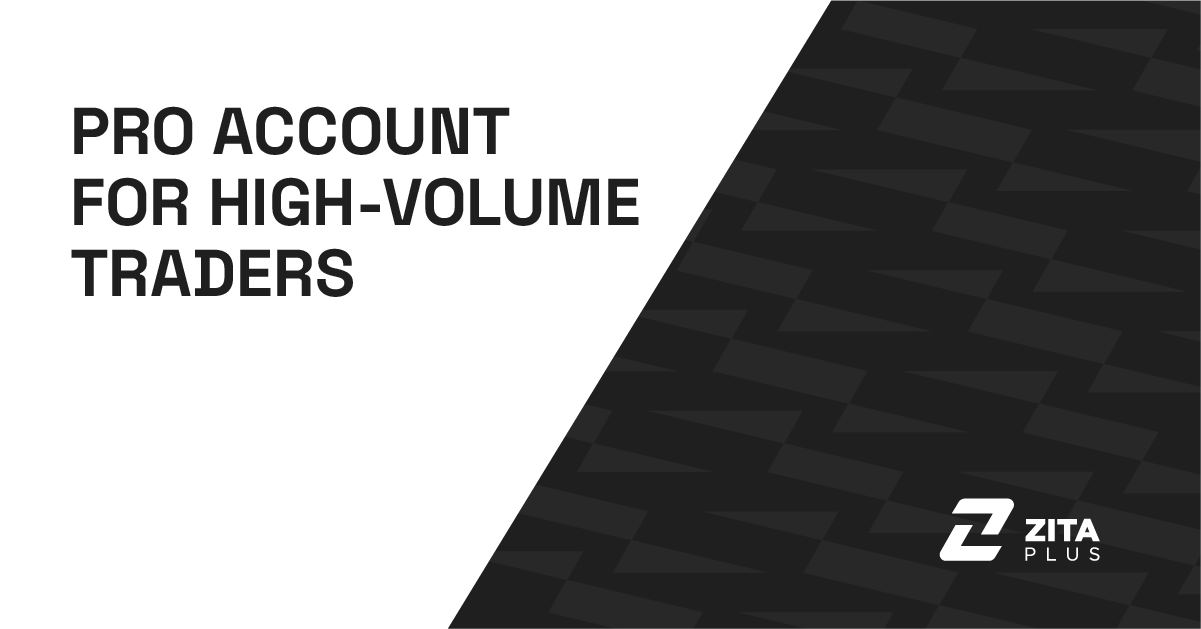
There are around 2000 forex and CFD brokers providing services for international traders. Most of them offer multiple account types. But not all the accounts are suitable for serious traders.
If you’re trading frequently, managing large positions, and treating the markets as a professional activity, you need more than just the basics. That’s where a Pro Account makes a real difference with lower spreads, reduced trading costs, and better order execution.
In this article, we’ll break down what a Pro Account is, who it’s for, and why high-volume traders prefer it.
A Pro Account is a live trading account designed for experienced traders who prioritize cost-efficiency and performance. It typically offers raw or near-raw spreads, zero or minimal commission, and faster execution compared to standard accounts. The goal is simple: reduce trading costs per lot and give the trader a tighter grip on their strategy.
These accounts are often called “RAW,” “Elite,” or “Professional” by different brokers, but the core idea is the same. Instead of building revenue through wide spreads or high markups, Pro Accounts offer more direct access to pricing, often supported by deeper liquidity. This setup benefits traders who execute frequently or manage higher volumes.
Unlike beginner-friendly accounts, Pro Accounts are best suited for those who understand the impact of spread costs and slippage. At the end of the day, all trading accounts serve the same basic purpose: to place buy and sell orders. But in this case, it's about doing it under better conditions, so you keep more of what you earn.

The technical definition could be different, but as an industry practice, a Pro Trader is someone who deposits high amounts and trades large volumes monthly basis. Often exceeding 100 lots per month and adding funds more than $10.000.
These traders usually execute multiple trades daily and rely on market movements to generate income rather than just occasional gains.
Also, we refer to Pro Traders as individuals who approach trading as a full-time activity or core business. They may include scalpers, day traders, signal providers, asset managers, or even institutional-style clients operating through retail platforms.
Pro traders treat trading as a profession, so they pay close attention to spread, execution speed, slippage, and platform reliability. For them, even small differences in trading costs can have a major impact over time. An advantageous account gives them access to conditions that align with their style, frequency, and capital exposure.
Different types of accounts are designed for specific expectations or trade styles. While some focus on simplicity and low deposit requirement, others prioritize costs, spreads, and swap rates.
Below is a side-by-side comparison of common trading account types and how they differ from a Pro one.
|
Feature |
Standard Account |
ECN Account |
Swap-Free Account |
Pro Account (ZitaPlus) |
|---|---|---|---|---|
| Spread | From 1.2 to 2.0 pips | From 0.0 pip (plus markup) | Often wider than standard | From 0.6 pip |
| Commission | None | $6–$10 per lot | None | None |
| Swap | Charged daily | Charged daily | Not charged | Charged daily |
| Target Users | Beginners, casual traders | Scalpers, EA users | Traders with religious needs | High-volume, professional traders |
| Execution Speed | Average | Faster | Average | Fast and stable |
| Minimum Deposit | Low (from $100) | Varies | Varies | Moderate to High (e.g. $10.000+) |
High-volume traders are not always institutions. Many are individual professionals who trade frequently and manage their own capital or client funds.
These people may open dozens of positions a day or hold fewer but larger trades over short timeframes. Common profiles include:
What they all share is sensitivity to cost. A one-pip difference or a small commission per lot might seem minor to a casual trader, but when multiplied over 50 or 100 lots, it quickly adds up.
It’s easy to overlook tiny fluctuations in price, but for active traders, those small margins can add up fast. Over time, half a pip can be the difference between profit and loss.
Let’s break it down with two practical examples:
Total savings per month: $1,800
Total savings per week: $1,000, and per month: $4,000
You can open a Pro Trading Account at ZitaPlus in just 2 minutes. The registration process is standard and simple.
If you need any assistance, our support team will help you through the onboarding process.
Does tighter spread always mean better execution?
Not necessarily. Tight spreads without proper liquidity can lead to slippage. It’s important to look at both pricing and fill quality.
Can zero commission accounts have hidden costs?
Yes. Some brokers widen the spread to offset the commission. Always compare the all-in cost per trade, not just the label.
Is a Pro Account better for all strategies?
No. For low-frequency or long-term traders, the difference may be minimal. These type of accounts benefit most those who trade often or with size.
How do I know if I’m considered a high-volume trader?
If you're regularly trading more than 100 lots per month or handling a huge amount of money, you fit the profile. But even lower volumes can benefit from better pricing.
What matters more: spread, commission, or execution?
All three are linked. A narrow spread is meaningless if your trade is delayed or slipped. The best account balances all three.
Should I switch to a Pro Account if I only trade one pair?
Yes, if you trade that pair actively and the broker offers better terms for it. EURUSD and XAUUSD traders often benefit the most
Why do some brokers limit access to Pro Accounts?
Because offering true raw pricing requires better liquidity and risk control. Some brokers prefer to keep margins high instead.
Would like to learn how to look financial markets from a different angle? Then keep reading and invest yourself with ZitaPlus.